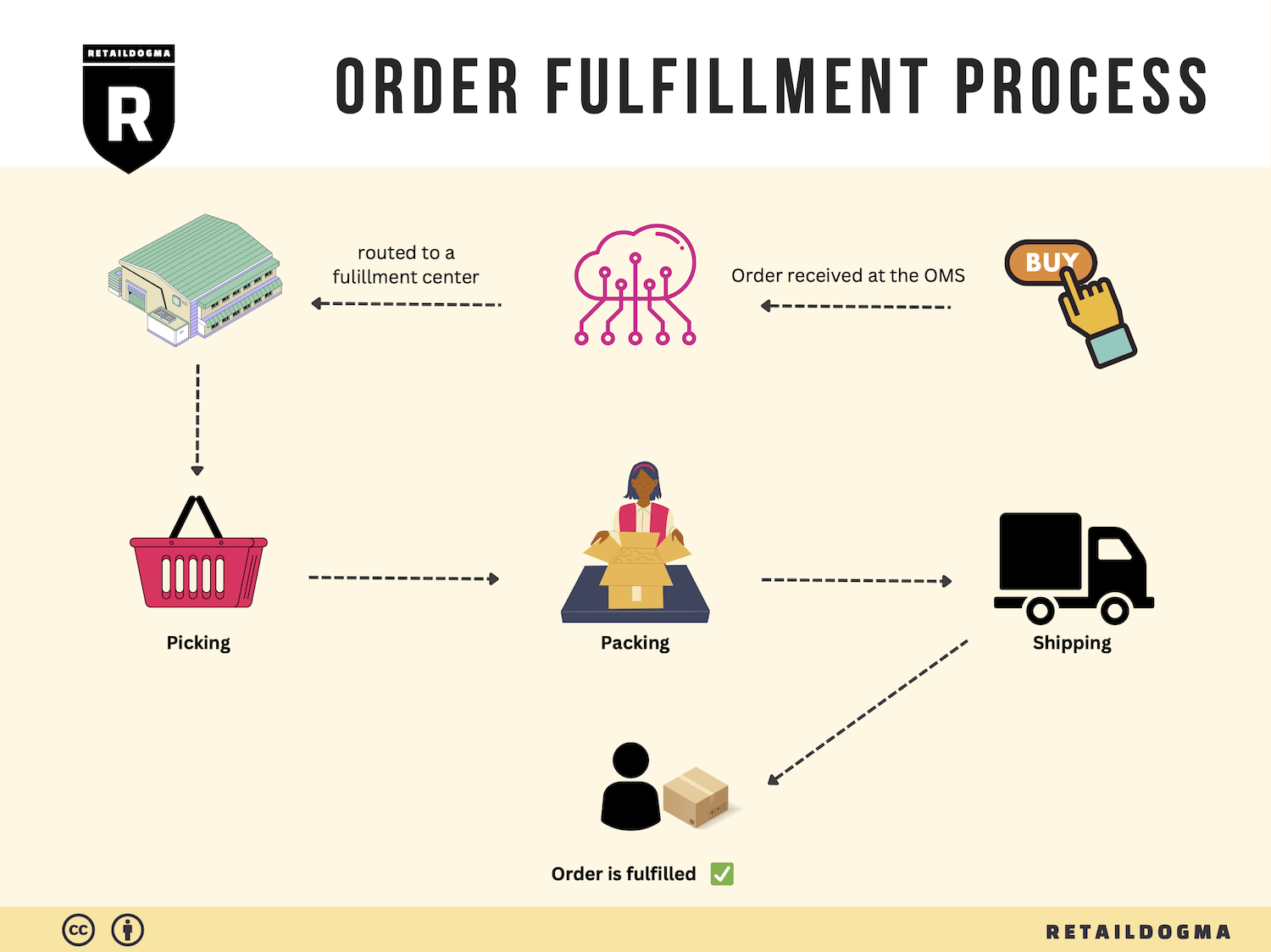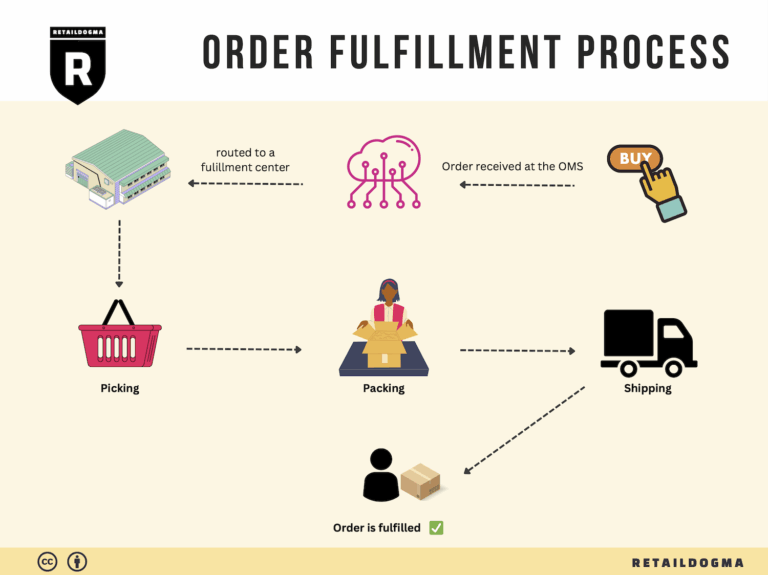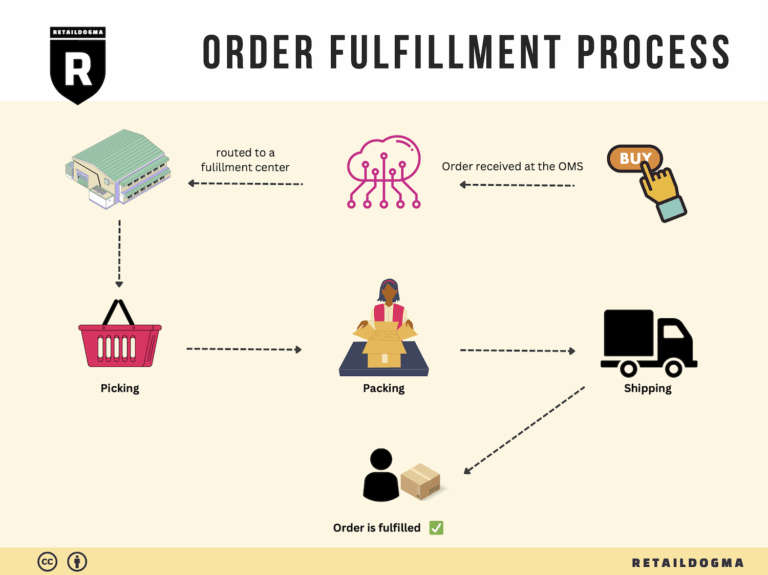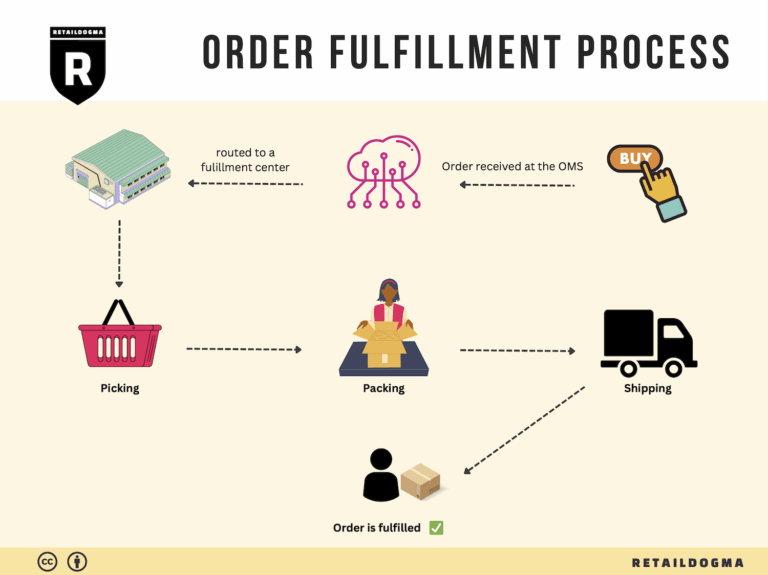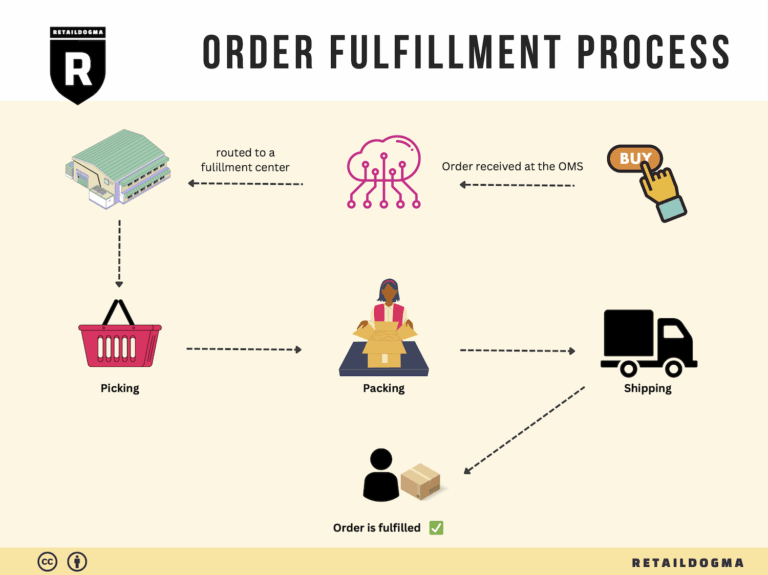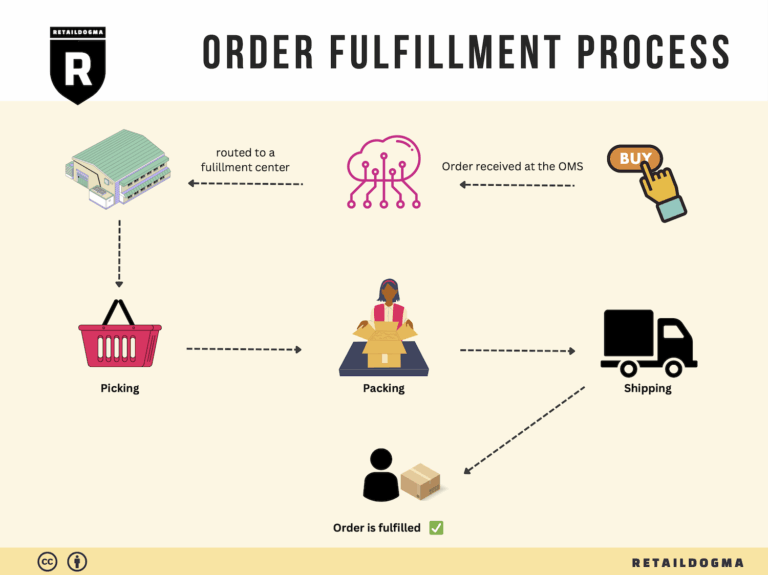Ecommerce Fulfillment Services: The Ultimate Guide (2025)
What is E-commerce Fulfillment? An Introduction for Growing Businesses
Understanding E-commerce Fulfillment: A Critical Component for Growth
As an e-commerce business owner, you’ve likely experienced the overwhelming chaos that comes with packing and shipping orders. The excitement of growing sales can quickly turn into frustration when you’re bogged down by the logistics of getting products to your customers. Fulfillment—the process of delivering a product from your inventory to the customer’s doorstep—plays a pivotal role in your business’s success. It’s not just about shipping; it’s about providing a seamless customer experience that keeps buyers coming back.
This guide will serve as your comprehensive resource on e-commerce fulfillment, breaking down the essential components that every growing business should understand. We will explore various fulfillment models, including Third-Party Logistics (3PL) and Fulfillment by Amazon (FBA), to help you identify which approach aligns best with your operational needs.
Next, we’ll delve into the core services provided by fulfillment partners. From order processing and inventory management to packing and shipping, understanding these services will empower you to choose a partner that can scale alongside your business. We will also cover the nuances of pricing structures in fulfillment, ensuring you have a clear understanding of costs associated with outsourcing your logistics.
Choosing the right fulfillment partner is critical for your business’s growth trajectory. In this guide, we’ll outline key factors to consider when evaluating potential partners, such as their technology capabilities, shipping options, and customer service. By understanding what makes a fulfillment partner effective, you can make an informed decision that aligns with your business goals.
Ultimately, our aim is to empower you to make smart, strategic decisions about your logistics. By optimizing your fulfillment processes, you can focus on what truly matters: growing your brand, enhancing your product offerings, and building lasting relationships with your customers. Let’s embark on this journey to demystify e-commerce fulfillment and equip your business for sustainable growth.
What You’ll Learn In This Guide
- What is E-commerce Fulfillment? An Introduction for Growing Businesses
- The Order Fulfillment Process: From ‘Buy’ Button to Customer’s Door
- Comparing Fulfillment Models: In-House vs. 3PL vs. Dropshipping
- A Deep Dive into Amazon FBA: Pros, Cons, and Who It’s For
- Core Services Offered by Fulfillment Centers
- How to Choose a Fulfillment Partner: A 6-Point Checklist
- Understanding Fulfillment Pricing: A Breakdown of Common Fees
- Frequently Asked Questions (FAQs) about Fulfillment
- Conclusion: Is Outsourcing Fulfillment the Right Move for Your Business?
- Important Disclaimer
The Order Fulfillment Process: From ‘Buy’ Button to Customer’s Door
1. Receiving Inventory
The first step in the order fulfillment process is receiving inventory. When products arrive at the fulfillment center, they are carefully unloaded and checked against purchase orders to ensure that the correct quantities and items have been delivered. This process involves verifying the Stock Keeping Units (SKUs) of each item, which are unique identifiers that help track inventory accurately.
Importance: Proper receiving practices are crucial for maintaining inventory accuracy and preventing stock discrepancies. If items are not accurately recorded upon arrival, it can lead to challenges later in the fulfillment process, such as stockouts or overstocking.
Key Term: SKU (Stock Keeping Unit) – A unique identifier for each product that helps in tracking inventory levels and orders.
2. Warehouse Storage
Once the inventory has been received and verified, it is then stored in designated areas within the fulfillment center. Efficient warehousing strategies involve organizing products based on their demand frequency, size, and other characteristics. This organization often employs a systematic layout that maximizes space and streamlines future picking processes.
Importance: Effective warehouse storage minimizes retrieval times during the order picking phase and ensures that items are easy to locate. A well-organized warehouse can significantly reduce operational costs and improve overall efficiency, leading to faster order fulfillment.
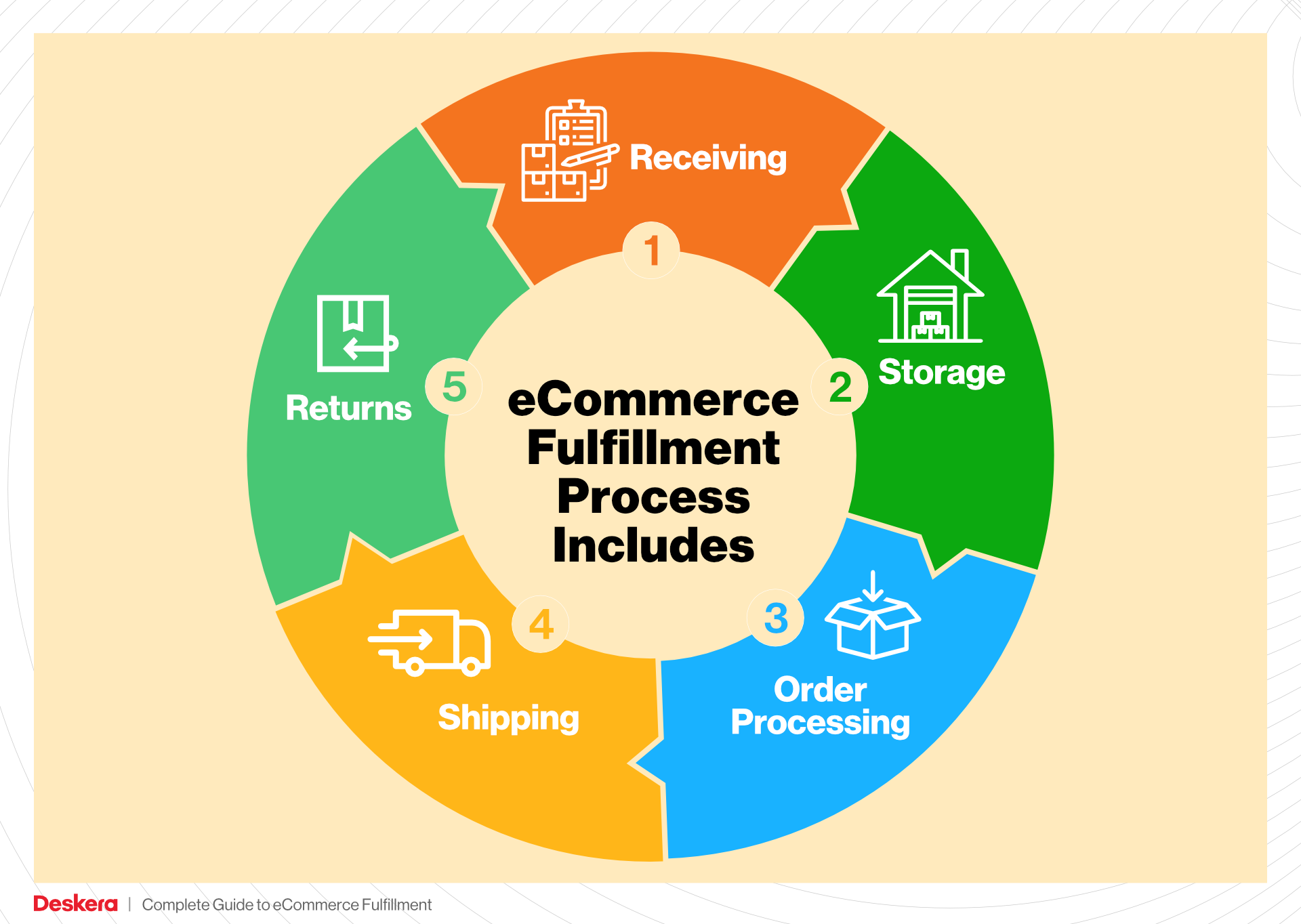
Key Term: FIFO (First In, First Out) – An inventory management strategy where the oldest stock is sold or used first, ensuring that items do not expire or become obsolete while sitting in storage.
3. Order Picking
Order picking is the process of selecting items from the warehouse to fulfill customer orders. Once a customer clicks the ‘Buy’ button, the fulfillment center generates a pick list, which details the items needed for each order. Workers use this pick list to navigate the warehouse and gather the required products.
Importance: This step is critical as it directly affects the accuracy and speed of order fulfillment. Efficient picking processes help ensure that the right products are selected and prepared for shipment. Mistakes made during this stage can lead to customer dissatisfaction and increased return rates.
Key Term: Pick List – A document or digital tool that outlines the items to be picked for a particular order, including their locations within the warehouse.
4. Order Packing
After items are picked, they move to the packing station, where they are carefully packed into boxes or poly mailers. This step involves choosing the appropriate packaging materials to ensure that products are protected during transit. Additionally, packing includes labeling the shipment with necessary information such as tracking numbers and delivery addresses.
Importance: Proper packing is essential for preventing damage during shipping and ensuring that items arrive in perfect condition. Moreover, well-packed orders enhance customer experience by demonstrating professionalism and care in handling their purchases.
Key Term: Packing Slip – A document included in the shipment that lists the items contained in the package, allowing customers to verify that they received everything they ordered.
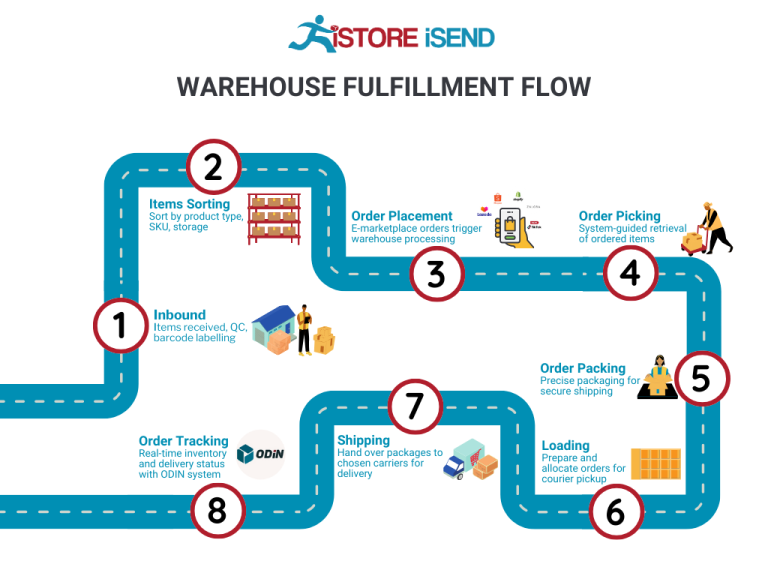
5. Shipping & Delivery
The final step in the order fulfillment process is shipping and delivery. Once packed, packages are handed over to shipping carriers, which may include options for standard, expedited, or same-day delivery. Fulfillment centers often maintain relationships with multiple carriers to provide flexible shipping options and competitive rates.
Importance: Timely shipping is crucial for customer satisfaction. The faster a customer receives their order, the more likely they are to return for future purchases. This step also involves tracking shipments, managing returns, and ensuring that customers are informed about their order status throughout the delivery process.
Key Term: Last-Mile Delivery – The final step of the shipping process where the package is transported from a fulfillment center to the customer’s doorstep, often considered the most critical and challenging part of the logistics chain.
By understanding these five essential steps in the order fulfillment process, e-commerce businesses can optimize their operations, enhance customer satisfaction, and ultimately scale their logistics efforts effectively. Each phase is interconnected, and attention to detail at every step can lead to improved efficiency and customer loyalty.
Comparing Fulfillment Models: In-House vs. 3PL vs. Dropshipping
Fulfillment Model Comparison
| Model | Who Handles Inventory | Best For (Business Stage) | Key Advantage | Key Disadvantage |
|---|---|---|---|---|
| In-House Fulfillment | The e-commerce business itself | Startups and established brands | Full control over inventory and processes | High operational costs and resource demands |
| Third-Party Logistics (3PL) | A third-party logistics provider | Growing brands and scaling businesses | Cost-effective scalability and expertise | Less control over inventory and processes |
| Dropshipping | Suppliers or manufacturers | New businesses and low-risk models | Low startup costs and minimal inventory risk | Lower profit margins and longer shipping times |
In-House Fulfillment
In-house fulfillment involves managing the entire logistics process within the e-commerce business itself. This model is often favored by startups and established brands that want to maintain complete control over their inventory and fulfillment processes. By handling inventory internally, businesses can customize operations, ensuring that every order meets their standards for quality and customer satisfaction.
However, in-house fulfillment comes with significant challenges. The operational costs can be high, requiring investments in storage space, packing materials, and shipping logistics. Additionally, managing inventory and fulfilling orders can be resource-intensive, diverting attention from strategic growth initiatives. For businesses that experience rapid growth, scaling operations can also become cumbersome, as they need to continually invest in resources to keep up with demand. Overall, while in-house fulfillment provides control, it can strain resources and limit scalability.
Third-Party Logistics (3PL)
Third-party logistics (3PL) providers offer a comprehensive solution for businesses looking to outsource their fulfillment processes. This model is ideal for growing brands and companies that are scaling their operations. By partnering with a 3PL, e-commerce businesses can leverage the provider’s expertise in logistics, storage, and order fulfillment, allowing them to focus on core business activities such as marketing and product development.
The key advantage of using a 3PL is the cost-effective scalability it provides. As order volumes increase, 3PLs can easily adjust their resources to accommodate growth without requiring businesses to invest heavily in infrastructure. Additionally, these providers often have established relationships with shipping carriers, enabling better shipping rates and faster delivery times. However, the downside is that businesses relinquish some control over their inventory and fulfillment processes. This can lead to challenges in maintaining consistent quality and customer experience, particularly if the 3PL does not align perfectly with the business’s standards.
Dropshipping
Dropshipping is a fulfillment model where the retailer does not hold inventory but instead relies on suppliers or manufacturers to fulfill orders directly to customers. This model is particularly appealing for new businesses or entrepreneurs looking to minimize risk and startup costs. With dropshipping, e-commerce businesses can offer a wide range of products without the burden of managing inventory or fulfilling orders themselves.
The primary advantage of dropshipping is its low barrier to entry. Entrepreneurs can launch their online store with minimal upfront investment, as they only pay for products once they are sold. This model also allows for flexibility in product offerings, as retailers can quickly test new products without committing to large inventory purchases. However, dropshipping does have its drawbacks. Profit margins can be lower compared to traditional fulfillment methods, as suppliers typically charge higher prices for the convenience of fulfilling orders. Additionally, dropshipping can lead to longer shipping times and variability in product quality, which can negatively impact customer satisfaction. Therefore, while dropshipping offers an accessible entry point into e-commerce, it requires careful management to ensure a positive customer experience.
Conclusion
Choosing the right fulfillment model is crucial for e-commerce businesses aiming to scale effectively. Each model—whether in-house fulfillment, 3PL, or dropshipping—has its unique set of advantages and disadvantages. In-house fulfillment provides control but can strain resources; 3PL offers scalability and expertise but at the cost of some oversight; and dropshipping minimizes risk but can compromise profit margins and shipping efficiency. Understanding these dynamics will empower e-commerce entrepreneurs to make informed decisions that align with their business goals and growth strategies.

A Deep Dive into Amazon FBA: Pros, Cons, and Who It’s For
Understanding Fulfillment by Amazon (FBA)
Fulfillment by Amazon (FBA) is a service provided by Amazon that allows e-commerce sellers to store their products in Amazon’s fulfillment centers. In turn, Amazon takes care of storage, packaging, shipping, and customer service on behalf of these sellers. This service is particularly appealing to small to medium-sized businesses looking to leverage Amazon’s extensive logistics network and customer base without the heavy lifting of managing their own warehousing and fulfillment processes.
How FBA Works
When a seller opts for FBA, they send their products to Amazon’s fulfillment centers. Once the inventory is received and processed, these products become available for sale on the Amazon platform. Here’s a step-by-step breakdown of how FBA operates:
-
Inventory Shipment: Sellers prepare and ship their products to Amazon’s designated fulfillment centers. This involves labeling items according to Amazon’s specifications.
-
Storage: Once received, Amazon stores the products in their warehouses until an order is placed.
-
Order Fulfillment: When a customer places an order for an FBA product, Amazon picks, packs, and ships the product on behalf of the seller. This includes handling all aspects of shipping, from labeling to the final delivery.
-
Customer Service and Returns: Amazon also manages customer inquiries and handles returns, providing a seamless experience for buyers.
-
Payment: After the sale, Amazon deducts its fees and transfers the remaining balance to the seller’s account.
FBA is an attractive option for sellers who want to tap into the vast Amazon marketplace while outsourcing the operational complexities of order fulfillment.
Pros of Using FBA
1. Prime Eligibility
One of the most significant advantages of using FBA is that products become eligible for Amazon Prime. This membership program offers customers free two-day shipping, which can significantly increase sales due to higher visibility and trust among Prime members.
2. Enhanced Customer Trust
Amazon’s reputation for reliability and customer service extends to FBA sellers. Buyers are more likely to purchase from sellers using FBA because they trust Amazon’s fulfillment and return processes. This trust can lead to higher conversion rates and repeat purchases.
3. Multi-Channel Fulfillment
FBA can also be utilized for sales made outside of Amazon, allowing sellers to use Amazon’s fulfillment services for orders placed on their own websites or other marketplaces. This multi-channel fulfillment capability provides flexibility and streamlines logistics, allowing sellers to manage inventory more effectively across platforms.
4. Scalability
FBA allows sellers to scale their operations quickly. As demand increases, sellers can rely on Amazon’s infrastructure to handle increased order volumes without the need to invest in additional warehousing or staff.
5. Simplified Logistics
By outsourcing fulfillment to Amazon, sellers can focus on growing their business rather than managing logistics. Amazon’s expertise in order processing and shipping can lead to operational efficiencies that might be difficult to achieve independently.
Cons of Using FBA
1. High Fees
While FBA offers many benefits, it also comes with a cost. Sellers must pay for storage fees based on the amount of space their inventory occupies and fulfillment fees for each order. These costs can add up, particularly for sellers with low margins or seasonal products.
2. Strict Inventory Rules
Amazon enforces strict guidelines regarding inventory management, including requirements for labeling and packaging. Sellers must adhere to these rules to avoid penalties, which can be time-consuming and complicated, especially for those new to the platform.
3. Commingling Risks
FBA products can be commingled with inventory from other sellers, leading to potential issues if a customer receives a defective or counterfeit item. If a seller’s product is mixed with another seller’s, it can be challenging to trace quality issues back to the source.
4. Limited Control
When using FBA, sellers relinquish some control over their fulfillment process. This includes how products are packaged and shipped, which may not align with the brand image that some sellers wish to maintain.
5. Inventory Management Challenges
Sellers must effectively manage their inventory levels to avoid storage fees for excess inventory or stockouts that can lead to missed sales. This balancing act can be particularly challenging for those unfamiliar with Amazon’s logistics.
Who is FBA Best For?
Fulfillment by Amazon is ideal for e-commerce sellers who want to leverage Amazon’s logistics network and customer base without the overhead of managing their own fulfillment operations. It is particularly suited for:
- Small to Medium-Sized Businesses: Sellers looking to scale quickly without heavy investments in infrastructure can benefit significantly from FBA.
- Sellers with High Turnover Products: Those selling fast-moving consumer goods can capitalize on Amazon’s quick fulfillment capabilities.
- Brands Looking for Exposure: Sellers wanting to reach Amazon’s vast customer base while maintaining their own storefronts on different platforms can effectively use FBA for multi-channel fulfillment.
- Time-Constrained Entrepreneurs: Those who prefer to focus on marketing, product development, and customer engagement rather than logistics will find FBA a valuable resource.
In conclusion, while Fulfillment by Amazon offers several advantages that can enhance an e-commerce business’s efficiency and reach, it is essential for sellers to weigh these benefits against the potential drawbacks, particularly regarding costs and control. Understanding the nuances of FBA can help sellers make informed decisions that align with their business goals.
Core Services Offered by Fulfillment Centers
Inventory Management & Warehousing
Inventory management and warehousing are foundational services offered by fulfillment centers that streamline the storage and tracking of products. Fulfillment centers receive inventory from e-commerce businesses and store it in a systematic manner, allowing for easy access and efficient order processing.
The primary benefit of effective inventory management is the reduction of holding costs. By leveraging advanced inventory tracking systems, fulfillment centers provide real-time data on stock levels, helping e-commerce businesses maintain optimal inventory without overstocking or stockouts. This capability is critical for preventing excess storage fees and minimizing the risk of obsolete inventory, which can significantly impact cash flow. Furthermore, with a well-organized warehousing system, businesses can quickly locate and retrieve products, enhancing the speed of order fulfillment and ultimately improving customer satisfaction.
Pick and Pack Services
Pick and pack services are a crucial component of the fulfillment process, where orders are prepared for shipment based on customer purchases. Once a customer places an order, fulfillment center staff pick the necessary items from the inventory, pack them securely, and label them for shipping.
The benefits of these services are manifold. First and foremost, outsourcing pick and pack operations allows e-commerce businesses to save valuable time and resources. Rather than dedicating internal staff to these labor-intensive tasks, businesses can focus on core activities like marketing, product development, and customer engagement. Additionally, fulfillment centers often employ best practices and automation technologies that enhance accuracy and efficiency in the picking process, reducing errors that can lead to costly returns or customer dissatisfaction. Quick and efficient packing also enables faster shipping times, a critical factor in today’s competitive e-commerce landscape.
Kitting and Assembly
Kitting and assembly services involve bundling individual items into a single package or creating custom products from multiple components. This service is particularly beneficial for e-commerce businesses that offer subscription boxes, promotional bundles, or complex products requiring assembly before shipping.
The key advantage of kitting and assembly services lies in their ability to provide a personalized shopping experience while streamlining operations. By outsourcing these tasks to fulfillment centers, businesses can ensure that products are prepared consistently and professionally, which enhances brand image and customer satisfaction. Additionally, kitting can help reduce shipping costs by consolidating items into one package, making it a cost-effective solution for both the business and the customer. This service also allows businesses to respond quickly to market trends or seasonal demands by easily adjusting their product offerings without the need for significant operational changes.
Returns Management (Reverse Logistics)
Returns management, or reverse logistics, is a vital service that enables e-commerce businesses to handle product returns efficiently. Fulfillment centers manage the entire returns process, from receiving returned items to inspecting, restocking, or disposing of them according to the business’s policies.
Effective returns management can significantly enhance customer satisfaction and loyalty. A seamless returns process reassures customers that they can shop confidently, knowing they have options if a product does not meet their expectations. Furthermore, fulfillment centers utilize sophisticated tracking systems to analyze return patterns, providing valuable insights into product performance and customer preferences. This data can inform inventory decisions and product improvements, ultimately leading to a better customer experience and reduced return rates. By outsourcing returns management, e-commerce businesses can save time and reduce operational strain, allowing them to concentrate on growth and customer engagement rather than the complexities of handling returns.
Conclusion
In summary, fulfillment centers offer a suite of core services that are essential for e-commerce businesses looking to scale operations efficiently. From inventory management and warehousing to pick and pack services, kitting and assembly, and returns management, these services not only streamline logistics but also enhance customer satisfaction. By partnering with a fulfillment center, e-commerce businesses can focus on strategic initiatives while leaving the intricacies of order fulfillment to the experts, ultimately fostering growth and profitability in a competitive market.
How to Choose a Fulfillment Partner: A 6-Point Checklist
Location & Warehouse Network
Importance: The geographical location of your fulfillment partner’s warehouses significantly impacts shipping times and costs. A strategically located fulfillment center can reduce transit times to your customers, leading to higher satisfaction and potentially lower shipping expenses.
Questions to Ask:
– Where are your fulfillment centers located, and how do these locations align with our target customer base?
– Do you have a network of warehouses that allows for regional distribution to optimize shipping times?
– How do you handle shipping to international customers? What locations do you cover?
Technology & Integrations
Importance: A robust technology infrastructure is essential for seamless order processing, inventory management, and real-time tracking. Your fulfillment partner should integrate smoothly with your e-commerce platform and other systems to ensure efficiency and accuracy.
Questions to Ask:
– What technology do you use for inventory management and order processing?
– Can your systems integrate with our e-commerce platform (e.g., Shopify, WooCommerce)?
– Do you offer real-time tracking for orders, and how is this information communicated to us and our customers?
Specializations (e.g., cold storage, oversized items)
Importance: Different businesses have unique requirements based on the nature of their products. If you sell perishable goods, fragile items, or oversized products, it’s vital to choose a fulfillment partner with the necessary capabilities to handle these specific needs.
Questions to Ask:
– What types of products do you specialize in fulfilling, and do you have experience with our product category?
– Do you offer specialized services like temperature-controlled storage or handling for oversized items?
– Can you accommodate custom packaging or kitting services for our products?
Scalability & Capacity
Importance: As your business grows, your fulfillment needs will evolve. A good partner should be able to scale their operations to accommodate increased order volumes without sacrificing service quality.
Questions to Ask:
– What is your current capacity for handling orders, and how quickly can you scale up during peak seasons?
– How do you manage fluctuations in order volume, especially during holidays or sales events?
– Can you provide examples of how you have scaled operations for other clients in the past?
Pricing and Contracts
Importance: Understanding the pricing structure and contract terms is crucial to avoid unexpected costs. Transparency in pricing ensures that you can budget effectively and assess the total cost of fulfillment services.
Questions to Ask:
– What is your pricing model (e.g., per order, per item, monthly fees)? Are there additional fees for storage, returns, or handling?
– Can you provide a detailed breakdown of all potential costs involved?
– What are the contract terms, and is there flexibility to adjust services as our needs change?
Customer Support & Reviews
Importance: Reliable customer support is essential for addressing issues that may arise during the fulfillment process. Additionally, reviews and testimonials from other clients can provide valuable insights into the partner’s reliability and service quality.
Questions to Ask:
– What kind of customer support do you offer (e.g., dedicated account manager, 24/7 support)?
– How do you handle issues such as order errors, inventory discrepancies, or shipping delays?
– Can you share references or case studies from other clients in our industry? What do online reviews say about your service quality?
Conclusion
Choosing the right fulfillment partner is a critical decision that can significantly affect your e-commerce business’s success. By evaluating potential partners against this checklist, you can ensure that you select a provider that aligns with your operational needs and growth ambitions. Taking the time to ask the right questions will lead to a more informed choice, setting the stage for a successful partnership that enhances your logistics capabilities and customer satisfaction.
Understanding Fulfillment Pricing: A Breakdown of Common Fees
Initial Setup Fees
When partnering with a fulfillment center, businesses often encounter initial setup fees. These are one-time charges that cover the costs associated with onboarding your products into the fulfillment system. The fees can vary widely depending on the complexity of your inventory and the specific processes the fulfillment center needs to implement.
Calculations for initial setup fees typically include:
- Inventory Assessment: A thorough evaluation of the products to determine handling requirements.
- System Integration: Costs associated with integrating your e-commerce platform with the fulfillment center’s Warehouse Management System (WMS).
- Labeling and Barcoding: Fees for labeling products to streamline the picking process.
It’s essential to discuss these fees upfront and understand what is included to avoid unexpected costs later on.
Receiving Fees
Receiving fees are charged each time your inventory arrives at the fulfillment center. This fee compensates the facility for the labor and resources required to unload, inspect, and store your products.
Receiving fees are generally calculated based on:
- Quantity of SKUs: The more unique products you have, the higher the receiving fee due to the increased handling and processing time.
- Volume of Inventory: Some centers charge per pallet or per item, so understanding how your products are packed and shipped can impact costs.
- Time Sensitivity: If your shipment requires expedited processing, additional fees may apply.
To minimize receiving fees, consider consolidating shipments and ensuring proper labeling and documentation.
Storage Fees (per pallet/bin)
Storage fees are recurring charges for keeping your inventory in the fulfillment center. These fees are typically assessed monthly and can vary based on the amount of space your products occupy.
Here’s how storage fees are calculated:
- Per Pallet or Bin: Many fulfillment centers charge based on the number of pallets or bins your inventory occupies, which can vary based on the size and configuration of your products.
- Seasonal Adjustments: Fees may increase during peak seasons, such as holidays, when storage demand is high.
- Long-Term Storage Fees: If your inventory remains in the facility for an extended period (usually over 30 days), additional long-term storage fees may apply.
To optimize storage costs, regularly review your inventory turnover rates and adjust your stock levels accordingly.
Pick & Pack Fees (per item/order)
Pick and pack fees are charged for the labor involved in retrieving items from inventory and preparing them for shipment. This fee structure can significantly impact your overall fulfillment costs, especially for businesses with high order volumes.
These fees are generally calculated based on:
- Per Item: Charges may apply for each item picked from the shelves, which can escalate with larger orders.
- Per Order: Some fulfillment centers charge a flat fee per order, regardless of the number of items, which can be beneficial for businesses with multiple items per order.
- Special Handling: Additional fees may apply for kitting, assembly, or special packaging requests.
To manage pick and pack costs effectively, analyze your order patterns and consider bulk shipping strategies to reduce the number of individual orders processed.
Shipping Fees
Shipping fees are often one of the largest components of fulfillment pricing, encompassing the costs associated with transporting your products to customers. These fees can vary based on several factors, including:
- Carrier Rates: Different shipping carriers have varying rates based on service levels (e.g., standard, expedited) and delivery zones.
- Package Dimensions and Weight: Shipping costs are heavily influenced by the size and weight of your packages, so optimizing packaging can lead to significant savings.
- Shipping Volume: Higher shipping volumes can lead to negotiated rates with carriers, which can reduce costs.
To ensure competitive shipping rates, consider establishing relationships with multiple carriers and exploring options for regional shipping discounts.
Conclusion
When seeking an accurate quote from a fulfillment center, it’s crucial to provide detailed information about your inventory, order volume, and specific service needs. Here are some practical tips to ensure you receive a comprehensive and precise quote:
- Inventory Details: Provide a complete list of SKUs, including dimensions and weight.
- Order Volume: Share your estimated monthly order volume to help the center calculate potential costs accurately.
- Specific Services: Clearly outline any additional services you may require, such as custom packaging or special handling.
- Review Pricing Structures: Ask for a breakdown of all fees, including any potential hidden costs, to fully understand the financial commitment.
By being thorough and transparent in your discussions, you can ensure a successful partnership with your fulfillment center that aligns with your business goals.
Frequently Asked Questions (FAQs) about Fulfillment
1. What is a fulfillment center?
A fulfillment center is a logistics hub that manages the entire order fulfillment process for e-commerce businesses. It handles activities such as receiving inventory, storing products, picking and packing orders, and shipping them directly to customers. The primary goal of a fulfillment center is to ensure timely delivery and efficient management of inventory.
2. How does a fulfillment center work?
When an order is placed through an e-commerce store, the fulfillment center processes the order by locating the purchased item in storage, packing it, and preparing it for shipment. Once packed, the order is labeled and handed over to shipping carriers for delivery. This process includes inventory management, order tracking, and handling returns.
3. What’s the difference between a warehouse and a fulfillment center?
While both warehouses and fulfillment centers store inventory, the key difference lies in their functions. Warehouses primarily focus on long-term storage of goods, whereas fulfillment centers are designed for quick turnover, processing orders rapidly to meet customer demand. Fulfillment centers also provide additional services such as packaging and shipping.
4. What is a 3PL?
A 3PL, or third-party logistics provider, is a company that offers outsourced logistics services, including fulfillment, warehousing, and distribution. E-commerce businesses often partner with 3PLs to leverage their expertise and resources, allowing them to focus on core business activities while the 3PL manages logistics operations.
5. How much do fulfillment services cost?
The cost of fulfillment services varies based on several factors, including the size and weight of products, order volume, storage needs, and additional services required (like kitting or special packaging). Generally, fulfillment costs can include storage fees, picking and packing fees, shipping costs, and any technology integration fees. It’s advisable to request quotes from multiple providers to compare pricing structures.
6. What are the benefits of using a fulfillment center?
Using a fulfillment center can offer numerous benefits, such as:
– Cost Efficiency: Reduces the need for in-house storage and staffing.
– Scalability: Easily adapt to changing order volumes without significant investments.
– Expertise: Benefit from the knowledge and experience of logistics professionals.
– Focus on Growth: Frees up time for business owners to concentrate on marketing, product development, and customer service.
7. How do I choose the right fulfillment center for my business?
To select the right fulfillment center, consider the following criteria:
– Location: Proximity to your customer base can reduce shipping times and costs.
– Services Offered: Ensure they provide all the services you need, such as returns management or international shipping.
– Technology Integration: Look for centers that offer seamless integration with your e-commerce platform.
– Reputation: Research reviews and testimonials to gauge their reliability and customer service.
8. Can a fulfillment center handle international shipping?
Yes, many fulfillment centers are equipped to manage international shipping. They have established relationships with various carriers and can navigate customs regulations to ensure smooth delivery of packages to international customers. It’s essential to confirm this capability with your chosen fulfillment provider.
9. What is inventory management in a fulfillment center?
Inventory management in a fulfillment center involves tracking stock levels, managing reorders, and ensuring that products are stored and handled correctly. This process helps prevent stockouts and overstock situations, optimizing the flow of goods and ensuring that orders can be fulfilled promptly.
10. How can I improve my order fulfillment process?
To enhance your order fulfillment process, consider the following strategies:
– Automate Where Possible: Implement technology solutions that automate inventory tracking and order processing.
– Optimize Inventory Levels: Use data analytics to determine optimal stock levels based on sales trends.
– Enhance Communication: Maintain clear communication with your fulfillment center to ensure they understand your needs and expectations.
– Regularly Review Performance: Analyze fulfillment metrics such as order accuracy and shipping times to identify areas for improvement.
Conclusion: Is Outsourcing Fulfillment the Right Move for Your Business?
Key Takeaways on Outsourcing Fulfillment
Outsourcing fulfillment can be a transformative decision for e-commerce businesses aiming to scale effectively. The primary benefits of partnering with a fulfillment center include significant time savings, enhanced scalability, and access to specialized expertise. By delegating the complexities of order processing, inventory management, and shipping logistics, business owners can refocus their efforts on growth-oriented activities such as marketing, product development, and customer engagement.
Time is one of the most valuable resources for any entrepreneur. Managing in-house fulfillment can be labor-intensive and distracting, often consuming hours that could be better spent on strategic initiatives. A fulfillment partner streamlines this process, allowing you to dedicate more time to scaling your operations and enhancing your customer experience.
Scalability is another critical advantage. As your business grows, so do your logistics needs. A reliable fulfillment center provides the flexibility to adjust to fluctuating order volumes without the overhead costs associated with maintaining an in-house operation. This adaptability is vital in today’s fast-paced e-commerce environment, where consumer expectations for speed and efficiency are constantly evolving.
Moreover, fulfillment centers bring expertise that can significantly improve your logistics operations. Their experience in handling various shipping scenarios, peak seasons, and inventory challenges positions them as strategic partners in your growth journey.
However, it’s essential to choose the right fulfillment partner. Not all providers offer the same level of service, technology, or reliability. Therefore, conducting an audit of your current shipping processes is a prudent first step. Evaluate your fulfillment needs and determine whether outsourcing could help you achieve your business goals more effectively. Take action today to explore the potential of a fulfillment partner and unlock new avenues for growth.
Important Disclaimer
⚠️ Important Disclaimer
The information in this guide is for educational purposes. Fulfillment services, pricing, and platform features change frequently. Always conduct your own due diligence and consult with providers directly before making business decisions.
